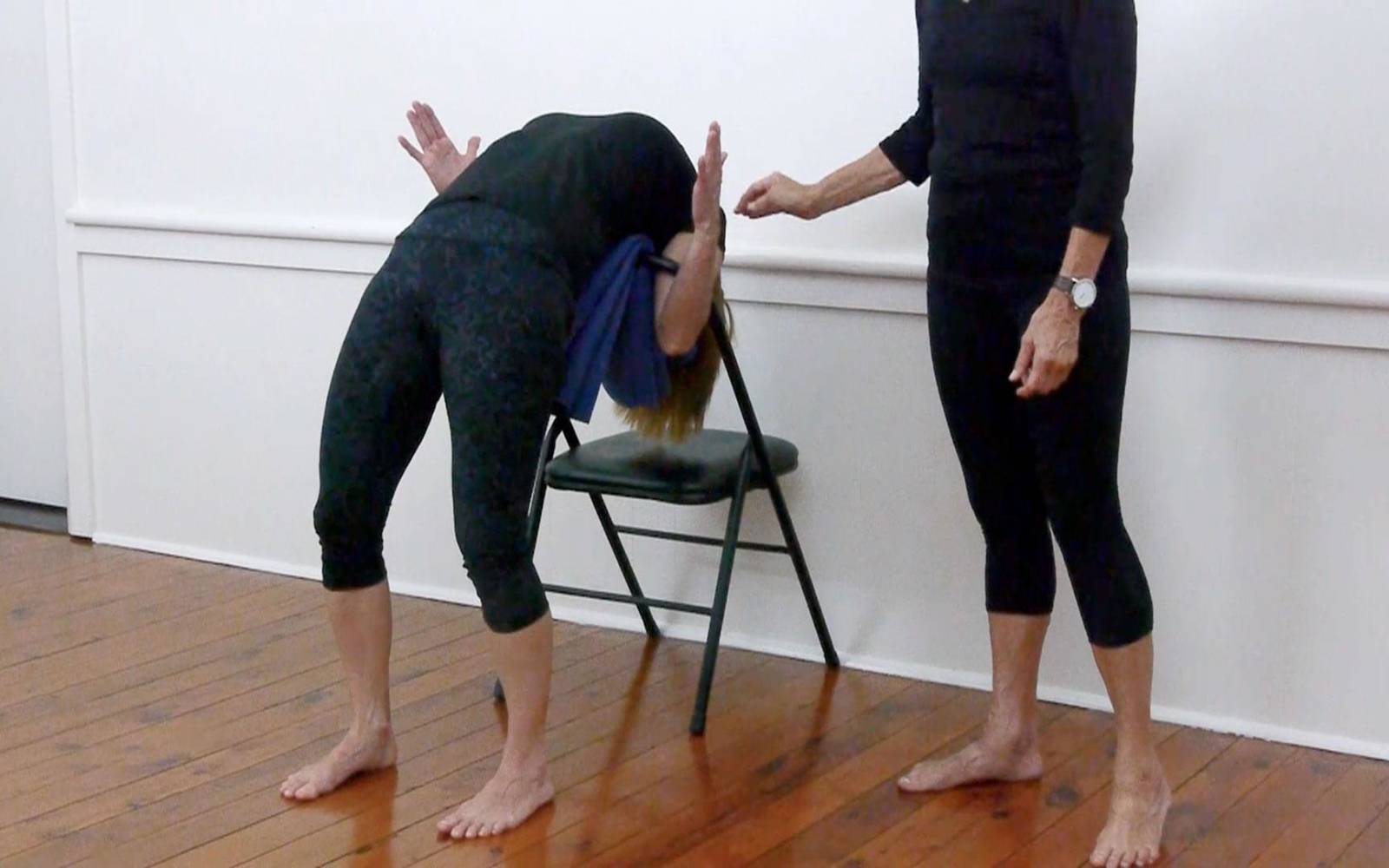How to perform Wheel Pose (Over Chair Back – First Variation)
Keep your feet firmly rooted and activate your legs. Use the chair back as support as you bend your back to capacity.
What is Urdhva Dhanurasana (Over Chair Back – First Variation)?
This is a supported variation of Urdhva Dhanurasana, also known as Wheel Pose. The support of the chair provides a reference point for the height of the hips and the overall shape of the pose. It is useful to work with the chair before undertaking the full pose from the floor so as to gradually get used to the curving action of the back ribs and the movement of the shoulder blades. The support allows you to work more precisely into the anchoring of the legs and the lengthening action required of the arms.
When to use it?
This pose can be beneficial for tightness in the shoulders and neck as the deep thoracic action required creates space for the shoulders to open and lengthens the spine. By curling over the chair, we draw the trapezius down the back towards the buttocks, freeing up the neck. The support of the chair helps to build up confidence and prepares the arms and wrists for the full pose. The use of the chair is also beneficial if energy levels are low or if working with injuries.
What are the benefits of using support in this pose?
Practicing a supported variation of Urdhva Dhanurasana in Iyengar yoga offers a lot of benefits. This dynamic backbend pose becomes accessible to a wider range of practitioners through the use of modifications or supports. The props provide stability, allowing individuals with limited flexibility or strength to experience the opening and energising effects without strain. Those recovering from injuries or dealing with physical limitations can benefit greatly from this variation, as it promotes safe alignment, builds core strength, and enhances spinal mobility. Supported Urdhva Dhanurasana is a powerful tool that empowers practitioners to explore and enjoy the benefits of backbends while respecting their limitations.

